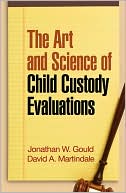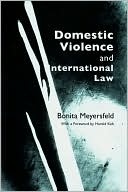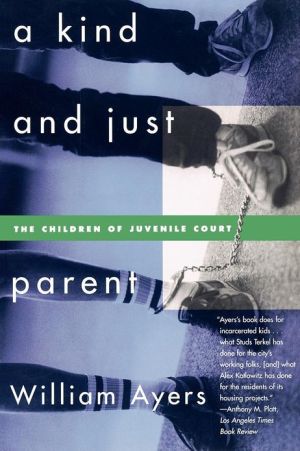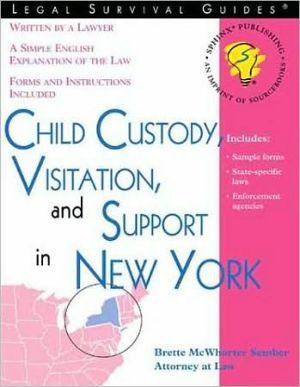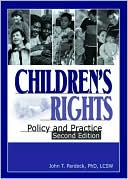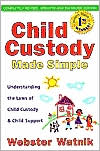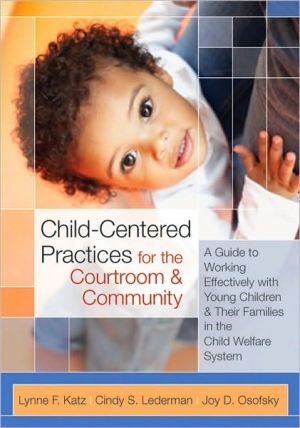The Art and Science of Child Custody Evaluations
Search in google:
Addressing key topics in child custody evaluation, this book provides essential knowledge for practitioners who want to meet the highest standards for both scientific validity and legal admissibility. The authors are leading experts who describe the latest data-based approaches to understanding and assessing relevant child, parent, and family factors. Going beyond the basics, the book gives in-depth attention to challenging, frequently encountered issues, such as how to evaluate allegations of domestic violence, child sexual abuse, and child alienation. Also covered are the complexities of interviewing children effectively and working in the adversarial forensic context. A user-friendly appendix contains sample letters and statements of understanding, with permission to photocopy.
Part I Child Custody Evaluations and the Best Interests of the ChildChapter 1 Introduction 3The Purpose of a Child Custody Evaluation 4The Relationship between Law and Psychology 4A Very Hot Kitchen 6Changing Paradigms 9The Importance of a Scientifically Informed Approach 11Assessing the Best Psychological Interests of the Child within the Family Context 24Chapter 2 The Best Interests of the Child Standard 31Development of the BICS 31Legal Criticisms of the BICS 32American Society and Child Custody Standards 33History of the BICS 34Determining the Best Psychological Interests of the Child 42The Evaluator's Focus 48Summary 51Part II The Art of Child Custody EvaluationsChapter 3 Ethics and Methods 55Clarity and Specificity in Ethics Codes 55The 2002 Psychologists' Ethics Code: New and Improved of Just New? 57A Sequential Examination of Ethical Issues and Methodology 58The Art of Self-Promotion 60Getting Off to a Good Start 62Bumps in the Road 71The Report 74Postevaluation Issues: The Virtues of Not Being Helpful, Part 2 77Pretrial Issues: The Virtues of Not Being Helpful, Part 3 77The Virtues of Being Helpful, Part 1 78The Big Day: The Virtues of Being Helpful, Part 2 78The Virtues of Not Being Helpful, Part 4 79Return of the Big Day: It Ain't Over Even When It's Over 79Ethical Dilemmas 80Ethics and Your Other Job 83Summary 84Chapter 4 Minimizing and Correcting for Bias 86Confirmatory Bias and Confirmatory Distortion 87Transparency and Due Process 93Summary 97Chapter 5 Increasing the Reliability and Relevance of Child Custody Evaluations 98The Standard ofRelevance and the Formulation of Questions 100The Standard of Reliability and the Use of Forensic Methods 103The Use of Direct Behavioral Observations of Parent and Child 104The Use of Collateral Record Review and Collateral Interviews 106Offering Conclusions and Recommendations 107Summary 108Chapter 6 Interviewing Children 110Factors to Consider in Interviewing Children 111Improper Interviewing Methods and Their Negative Effect on Children's Testimony 113Risks of Inaccuracies in Evaluators' Recording or Recollection of Child Interview Data 117Due Process Considerations Related to Improper Interviewing and Inaccurate Hearsay 120The Need to Audio- or Videotape All Interviews with Children 121Summary 123Chapter 7 Children's Voices 124Learning to Hear Children's Experience of Divorce 124Linguistic Principles to Guide Forensic Interviews of Children 127Common Linguistic Problems in Interviewing Children 133Summary 141Part III The Science of Child Custody Evaluations: Factors to Assess in Child Custody EvaluationsChapter 8 Assessment of Child Developmental Factors 145Setting the Stage 146Children's Reactions to Separation and Divorce 147Children's Adjustment and the Need for Competent Parenting 149Research Examining Relevant Child Development Factors 150Developing Competence in Children 151Definitions of Competence and Resilience 153Developmental Tasks 154Foundations of Competence in Early Development 155Attachments and Parenting 156Attachment and Development of Internal Working Models 158Children's Relationships with Caring Adults: The Attachment System 159Application of Child Development Research to Custody and Access Decision Making about Young Children 163Competence in the School Years 170Resilience in Children at Risk 177Organizing the Advisory Report around Children's Voices 179Children's View of Each Parent's Fairness, Caring, and Respect 181Summary 182Chapter 9 Assessment of Parent Factors 184Defining Parenting 185Emotional Competence in Adults 193Parenting Style Variables 197Postdivorce Father Involvement 210Organizing the Advisory Report around Parenting Competencies 215Summary 220Chapter 10 Assessment of Family Factors 221Risky Family Factors 222Risky Family Characteristics and Emotion Processing 224Emotion Processing and Mental and Physical Health Outcomes 226Social Competence and Mental and Physical Health Outcomes 230Substance Abuse and Risky Sexual Behavior 231Socioeconomic Status, Family Characteristics, and Mental and Physical Health Risks 233Physical Health and Safety Factors 234Assessment of Risky Family Factors 236Summary 238Part IV The Art and Science of Child Custody Evaluations: Assessing Allegations of MaltreatmentChapter 11 Assessing Allegations of Child Sexual Abuse 241Maltreatment 242Defining Child Sexual Abuse 247Careful Use of Terminology 249Evaluating Allegations of Sexual Abuse 249The Use of Psychological Tests and Measures 262Forensic Evaluation of an Alleged Perpetrator of Child Maltreatment 270Kirkpatrick's Model of Evaluation of Allegations of Child Sexual Abuse within the Context of Child Custody Disputes 273Summary 276Chapter 12 Assessing Allegations of Domestic Violence 277Abuse Is a Violation of a Fundamental Human Right 278The Importance of Research about Men and Research about Women 279Competing Needs of Science and Politics 280Models, Assumptions within Models, and Potential Bias 282Evaluators Are Better Educated Than We Thought 283Foundational Concepts in Understanding Domestic Violence 286Models of Domestic Violence 295Models of Psychological Assessment in the Forensic Evaluation of Allegations of Domestic Violence within a Custody Dispute 307Bancroft and Silverman's Model of Assessment of Familial Maltreatment 312Summary 316Chapter 13 Assessing Allegations of Child Alienation 317Gardner's Parental Alienation Syndrome 319Kelly and Johnston's Child Alienation Model 335Drozd and Olesen's Model for Discriminating Alienation from Domestic Violence 343Summary 350Chapter 14 Another Call for Humility 351Stay within the Lines 351Know State Statutes and Case Law 352Do Not Offer Ultimate-Opinion Testimony Concerning the Credibility of the Litigants 352Follow Peer-Reviewed Methods and Procedures 353Do Not Make Complex That Which Is Simple 353Know Current Literature 354Appreciate the Distinction between Clinical Assessment and Forensic Assessment 355Recognize That Conducting Custody Evaluations Is an Inherently Forensic Endeavor 355Recognize That the Court Shall Be Conceptualized as the Primary Recipient of the Report That the Evaluator Prepares 355Create and Preserve Detailed Records 355Attend Continuing Education Seminars 356Summary 356A Final Word 356Appendix: Sample Statements of Understanding and Letters 361References 387Index 441
